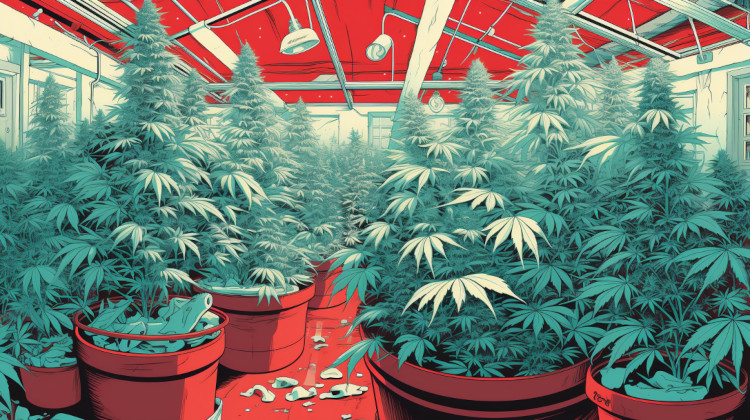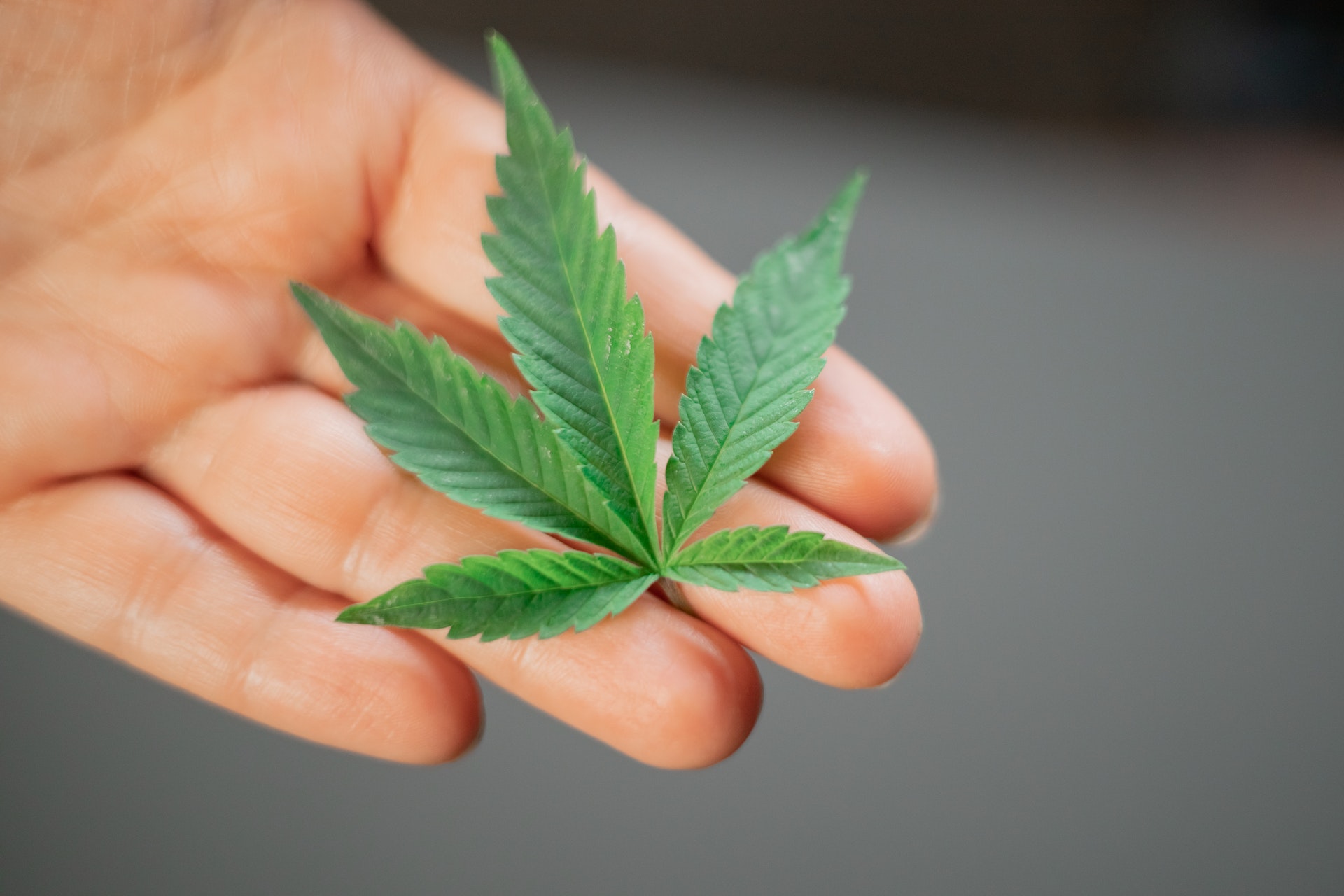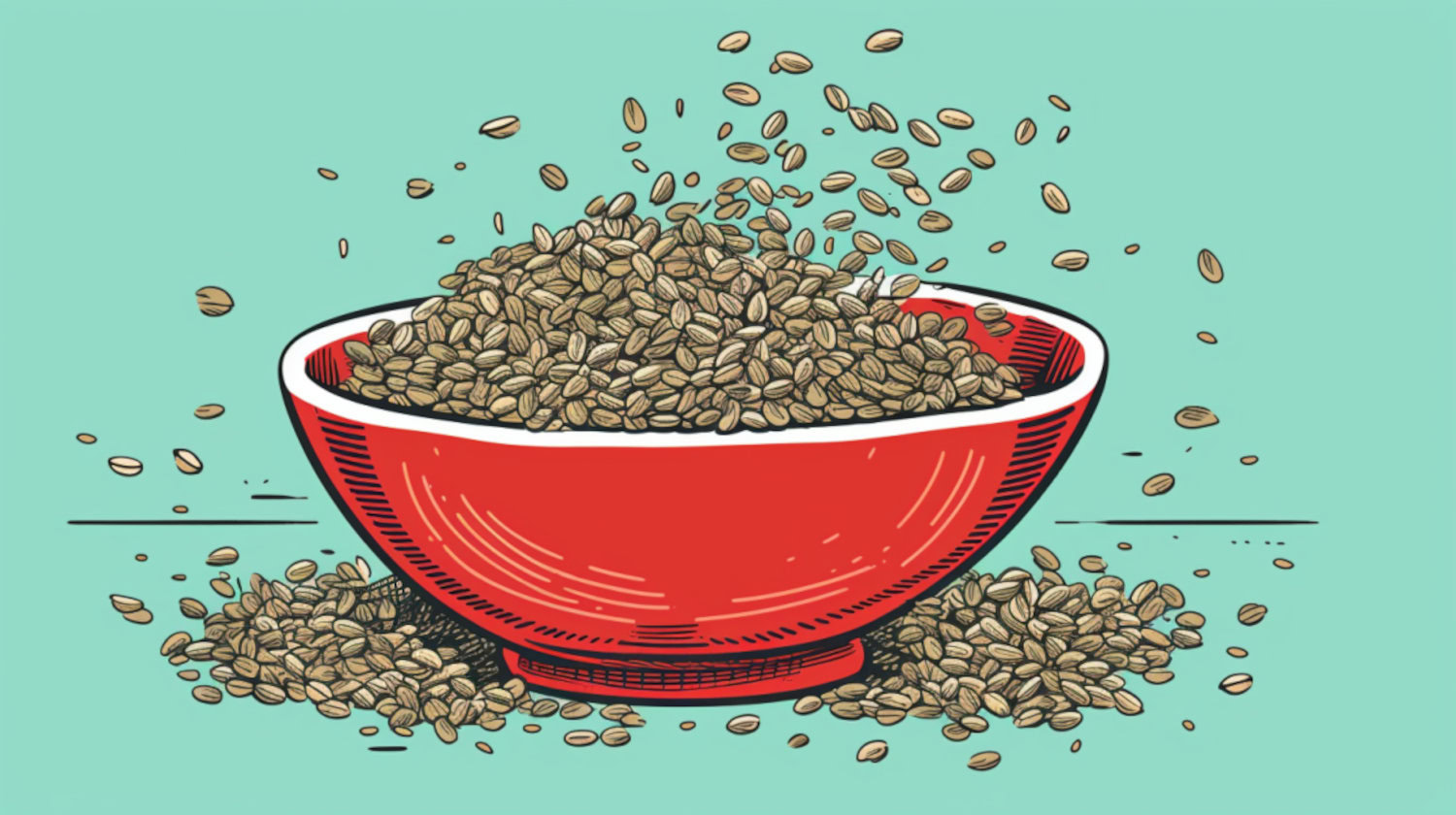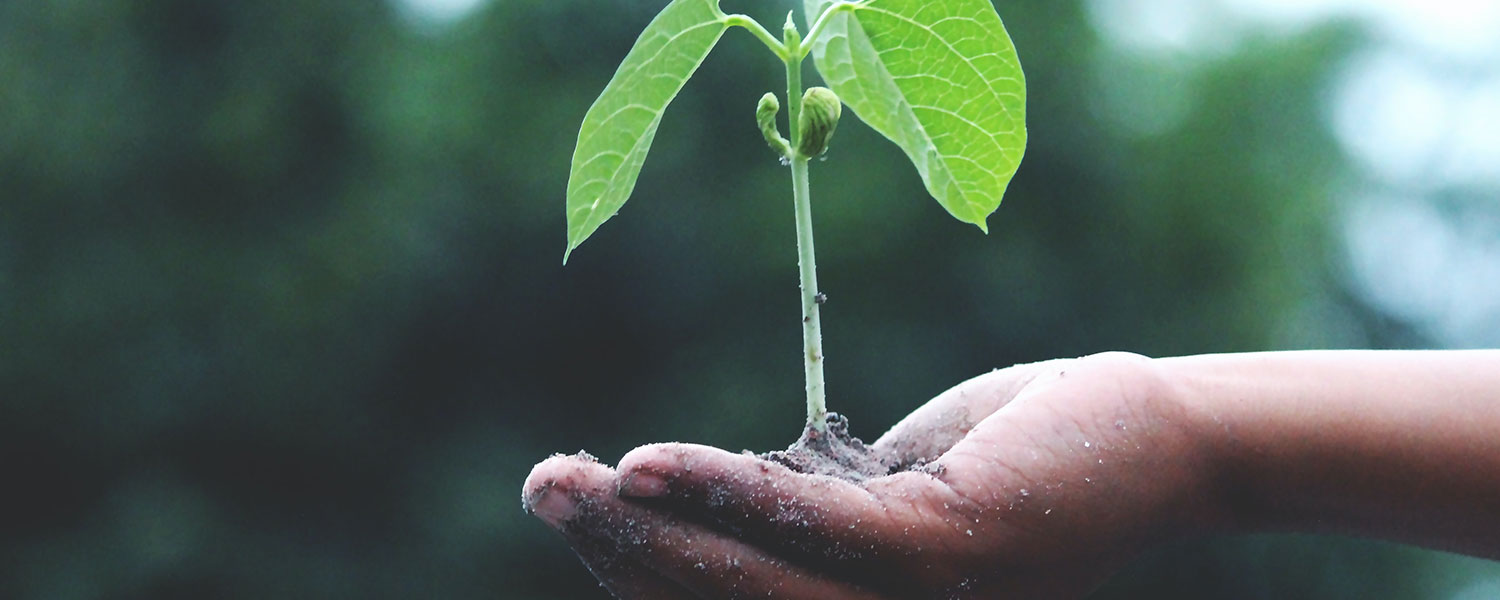In This Article
- Why Is Soil Important for Growing Weed?
- Nutrients
- pH Level
- Microbes
- Components of the Best Soil for Cannabis
- 1. Soil Amendments
- 2. Nutrients
- 3. Microorganisms
- How to Mix the Best Soil for Marijuana
- 1. Choose the right type of soil
- 2. Understand the soil ratios
- 3. Balance the proper qualities of your soil:
- What to Look for In Soil for Indoor Weed Plants
- NPK Ratios for Indoor Plant Soil
- Top Indoor Potting Mixes for Cannabis:
- Finding the Best Outdoor Soil for Cannabis
- NPK Ratios for Outdoor Plant Soil
- Drainage
- Top Outdoor Potting Mixes for Cannabis
- Soil Maintenance for Cannabis
- Watering
- Fertilization
- Changes with Growth Stages
- 4. Indoor vs. Outdoor Plants
- Solving Common Soil Problems
- 1. Nutrient Deficiencies
- 2. Lack of Water
- 3. Overwatering
- 4. Pests and Diseases
- References
Key Takeaways
- Soil choice can significantly impact the cannabis plant’s growth, health, and quality of harvest.
- For healthy and thriving cannabis, pay attention to the components that make up the soil.
- Choose the right type of soil > Understand the ratios > Balance the proper qualities.
Growing cannabis successfully involves mastering several key factors, including light, temperature, humidity, and ventilation. However, when it comes to laying the foundation for a thriving cannabis garden, one thing stands out above all: the soil.
The soil you choose to nurture your cannabis plants in can significantly impact their growth, health, and, ultimately, the quality of your harvest. It's where your cannabis plants will establish their roots, extract essential nutrients, and develop into robust, resinous wonders. Getting the best soil for cannabis growing from the start can make the difference between mediocre results and an exceptional cannabis crop.
Why Is Soil Important for Growing Weed?
Good soil is the foundation for cultivating healthy and high-yielding cannabis plants. It isn't just about providing a surface for your plants to grow in; it's about creating an environment that fosters optimal growth, nutrient absorption, and overall plant health.
Here are some of the ways that your soil can help determine the health and success of your cannabis plants:
Nutrients
One of the primary functions of soil in cannabis cultivation is as a reservoir for essential nutrients. Cannabis, like all plants, requires a range of macro and micronutrients to grow its best and produce its fruits (the bud). These nutrients include nitrogen, phosphorus, potassium, calcium, magnesium, and numerous others.1
The composition of your soil directly affects the availability of these nutrients to your cannabis plants. Thus, all these vital elements are present in the best soil for marijuana, providing your plants with the building blocks they need to thrive.
pH Level
Another critical factor is the pH level of your soil. pH measures the acidity or alkalinity of your soil, which profoundly impacts nutrient uptake. Cannabis typically thrives in slightly acidic to neutral soils, with a pH range of 6.0 to 7.0.
Altering soil properties, including pH, can influence plant growth and yield production. Maintaining the correct pH level ensures that nutrients are available for absorption, preventing deficiencies or toxicities that can hinder plant development.2
Microbes
You may think of it as mere dirt, but the soil is a complex ecosystem teeming with life, particularly beneficial microorganisms. These soil microbes assist with and handle various essential functions, such as nutrient cycling, breaking down organic matter, and improving soil structure.3
Soil microbes offer an alternative method for providing nutrients to your cannabis plants. They can enhance nutrient availability and absorption, ultimately contributing to robust plant growth and yield production.
Components of the Best Soil for Cannabis

Creating the perfect soil mix is like cooking a gourmet meal. The ingredients make all the difference. To nurture healthy and thriving cannabis, pay attention to the components that make up your soil.
Here's what you should look out for when mixing your soil:
1. Soil Amendments
Soil amendments are essential for enhancing the quality of your cannabis soil mix. They help provide the right texture, aeration, and water retention. Here are some commonly used soil amendments for cannabis cultivation:
- Coco Coir: Coco coir is a popular soil amendment derived from coconut husks. It's prized for its excellent water retention and aeration properties, making it a fantastic addition to your soil mix. Coco coir also has a neutral pH, which can help maintain your soil's pH balance.
- Perlite: Perlite is a lightweight volcanic glass that improves soil drainage and aeration. It creates air pockets within the soil to prevent soil compaction and promote healthy root growth.
- Clay Pebbles (Hydroton): Clay pebbles are often used in hydroponic systems. However, they can also be a valuable addition to soil mixes. They provide stability, aeration, and moisture retention.
- Vermiculite: Vermiculite helps with moisture retention and improves soil structure. It's particularly beneficial in sandy soils.
2. Nutrients
Cannabis relies on three nutrients, in particular, that need to be in the soil: nitrogen, phosphorus, and potassium (NPK). The ideal NPK ratio for cannabis can vary depending on the growth stage. Generally speaking, during the vegetative stage, the best soil for cannabis will contain a balanced NPK ratio like 3:1:1. In the flowering stage, a lower nitrogen (N) content, such as 1:3:2 or even 0:3:3, can promote bud development.
Beyond the primary macronutrients, cannabis requires several minor nutrients, including calcium (Ca), magnesium (Mg), sulfur (S), and iron (Fe), all of which play essential roles in plant growth and development.
3. Microorganisms
The best cannabis soils will also contain microorganisms such as mycorrhizae. Mycorrhizal fungi form a symbiotic relationship with the roots of cannabis, enhancing nutrient uptake and overall plant health. Research suggests that mycorrhizal fungi and their associated microbes can promote plant growth.4 So, using mycorrhizae in your soil can significantly benefit cannabis cultivation.
Apart from mycorrhizae, soil teems with various beneficial microorganisms. These microbes play a crucial role in nutrient cycling, disease suppression, and enhancing soil structure. Incorporating microbe-rich natural soil as an amendment can manipulate cannabinoid production in cannabis.
How to Mix the Best Soil for Marijuana
Creating the ideal soil mix for cannabis is both an art and a science. The right combination of soil components in the correct ratios can make or break the health and yield of your cannabis plants.
Here's a step-by-step guide to mixing the best soil for growing weed:
1. Choose the right type of soil
First and foremost, we should touch on the varying types of soil:
- Sandy Soil: Sandy soil provides excellent drainage but tends to dry out quickly. Therefore, it's a valuable component to prevent waterlogged roots.
- Silty Soil: Silty soil holds moisture well and is rich in nutrients. It helps balance the quick-draining properties of sandy soil.
- Loamy Soil: Often considered the gold standard, loamy soil combines the best of both worlds: good drainage and moisture retention. It's rich, crumbly, and full of organic matter.
- Clay Soil: Clay soil has excellent water retention but can become compacted, reducing aeration. It's beneficial in moderation to improve water-holding capacity.
2. Understand the soil ratios
The ideal soil mix for growing weed typically consists of a balanced blend of the above components. Here's a basic ratio to get you started:
- 40% Sandy Soil: Provides drainage and prevents waterlogging.
- 40% Loamy Soil: Offers a rich, fertile base.
- 20% Compost or Organic Matter: Adds nutrients and improves soil structure.
This ratio serves as a starting point, but adjust it based on your cannabis strain, local climate, and watering habits. Cannabis plants have varying preferences, so you may need to adjust the ratio to suit your specific growing conditions.
3. Balance the proper qualities of your soil:
When you're mixing soil, you'll want to aim for these qualities:
- Well-Draining: Cannabis roots dislike sitting in water, so ensure your soil has good drainage.
- Aerated: Incorporate components like perlite or vermiculite to keep the soil loose and well-aerated.
- Nutrient-Rich: The soil should contain essential nutrients, either naturally or through the addition of amendments.
- pH-Adjusted: Test and adjust the pH level to the ideal range for cannabis (around 6.0 to 7.0).
Of course, you can get around all this talk of soil by growing your weed with hydroponics, which requires no soil at all!
What to Look for In Soil for Indoor Weed Plants

Considering the differences in indoor and outdoor growing, chances are you won't want to use the same soil inside that you do outside.5 So, when purchasing pre-mixed soil for your indoor weed plants, make sure to keep these things in mind:
- High Porosity: Indoor cannabis plants require a growing medium with high porosity to facilitate optimal growth. This allows for good airflow to the roots and helps prevent overwatering.
- Fast Draining: Soil should drain relatively quickly to avoid waterlogged roots and the risk of root pathogens. Materials like perlite or vermiculite can improve drainage.
- Moderate Water Retention: While fast drainage is crucial, the soil should also maintain moderate water content between irrigations. This helps ensure your plants receive a consistent water supply.
- Balanced Physical and Chemical Properties: Look for a soil mix with well-balanced physical properties, such as texture and structure. You'll also want to ensure the soil has the right chemical properties, including a pH level within the ideal range for indoor cannabis (approximately 6.0 to 7.0).
NPK Ratios for Indoor Plant Soil
The NPK ratios in pre-mixed soils may vary depending on the brand and intended use. While general-purpose potting mixes may work for cannabis, you should always check the label for nutrient content.
Consider whether you want a soil mix designed for the vegetative growth stage (higher in nitrogen) or the flowering stage (higher in phosphorus and potassium). However, some growers prefer to adjust nutrient ratios themselves using liquid fertilizers.
Top Indoor Potting Mixes for Cannabis:
- FoxFarm Ocean Forest Organic Potting Soil: This well-balanced potting mix is known for its nutrient-rich composition and good drainage properties, making it a popular choice among indoor cannabis growers.
- Roots Organics Original Potting Soil: This organic soil blend contains a mix of natural ingredients that promote vigorous root development and overall plant health.
- Happy Frog Potting Soil: This pH-balanced mix is designed for container gardening and indoor use. It contains beneficial microbes and mycorrhizae to support nutrient uptake.
- Pro-Mix HP Mycorrhizae: This high-porosity potting mix is enhanced with mycorrhizae, which can improve nutrient absorption and overall plant health.
Finding the Best Outdoor Soil for Cannabis
While there's plenty of dirt in the ground, choosing the best soil for growing weed is essential for healthy and productive plants. When seeking pre-mixed soil for your outdoor cannabis garden, pay attention to these factors:
- Phytoremediation: Cannabis is known as a phytoremediator, meaning it can extract contaminants from the soil.6 This quality is crucial for outdoor growers, especially if you're using your ground soil in your mix. Always test your ground soil for contaminants before planting. Otherwise, those contaminants may end up in your crop.
- Organic Matter: Look for a soil mix rich in organic matter. Organic matter provides essential nutrients and improves the soil's water-holding capacity.
- Well-Draining: While cannabis prefers well-draining soil, outdoor plants may benefit from slightly higher water retention than indoor plants. An ideal mix strikes a balance between good drainage and adequate moisture retention.
- Texture and Structure: The soil should have a crumbly texture and good structure to allow for root development and aeration. This is especially important for outdoor growing, considering the ground soil can sometimes be fairly tough and compact.
NPK Ratios for Outdoor Plant Soil
The NPK ratios for your outdoor plant soil may not differ much from those for your indoor plants. Whether plants are inside or outside, the amount of nutrients should be the same.
So, for instance, a mix with a higher nitrogen (N) content is suitable during the vegetative growth stage. A blend with increased phosphorus (P) and potassium (K) levels is preferred for flowering.
Drainage
While outdoor soils should provide sufficient moisture retention, good drainage remains essential. Adequate drainage, especially during heavy rains, helps prevent waterlogging.
Top Outdoor Potting Mixes for Cannabis
- PRO-MIX Outdoor Garden Mix: This high-porosity mix offers excellent aeration and water retention, making it ideal for outdoor cannabis cultivation.
- Black Gold Natural & Organic Potting Mix: This organic mix is enriched with earthworm castings and other natural ingredients, creating a nutrient-rich environment for your outdoor cannabis plants.
- Ocean Forest Organic Potting Soil: This soil blends rich organic matter, bat guano, peat moss, fish emulsion, crab meat, and more to offer a balanced environment for outdoor cannabis growth.
- Roots Organics 707 Organic Soil: This soil mix is known for its high-quality organic ingredients, including perlite, coco fiber, pumice, earthworm castings, and more.
Soil Maintenance for Cannabis

In much the same way as you'd maintain the health of your plants, you also must maintain the health and quality of your soil. Otherwise, your cannabis plants won't thrive.
Proper care for the best soil for cannabis involves several key aspects, from watering to fertilization, and it can vary depending on whether you're growing cannabis indoors or outdoors.
Watering
Cannabis prefers consistent moisture levels, but it's essential to avoid overwatering, as this can lead to root rot. Water your plants when the top inch or two of the soil feels dry to the touch. Outdoor plants may require more water than indoor plants due to environmental factors such as heat and humidity.
Fertilization
The frequency of fertilization depends on several factors, including the type of soil mix and the stage of plant growth. Generally, indoor cannabis plants benefit from lighter, more frequent fertilization, around 1-2 times a week. On the other hand, outdoor plants may require less frequent but more substantial feedings.
Many growers prefer organic fertilizers for their cannabis plants. These include compost, worm castings, bat guano, and fish emulsion. Organic solutions enhance soil health, foster beneficial microorganisms, and mitigate the risk of nutrient imbalances.
However, liquid fertilizer does have its advantages. Liquid fertilizers are absorbed more quickly by the roots, making them suitable for fast nutrient uptake.
Changes with Growth Stages
- Vegetative Stage: During the vegetative growth stage, cannabis plants need higher nitrogen (N) levels to support leaf and stem development. Fertilize accordingly with a balanced NPK ratio.
- Flowering Stage: During the flowering stage, cannabis plants require higher levels of phosphorus (P) and potassium (K) to promote bud development. Adjust your fertilizer choice to match these needs.
- Transition Period: When transitioning between growth stages, gradually adjust your fertilization regimen to accommodate changing nutrient requirements.
4. Indoor vs. Outdoor Plants
Indoor cannabis plants are often grown in containers in controlled environments. To maintain optimal soil conditions, they may require more precise attention to watering and fertilization. Indoor plants also require good ventilation to prevent the growth of mold and mildew.
Outdoor cannabis plants interact with natural environmental conditions, including rain, sunlight, and temperature fluctuations. They may require less frequent watering, but it's essential to monitor soil moisture levels to ensure they receive adequate hydration.
Solving Common Soil Problems
Cultivating cannabis can sometimes bring unexpected challenges related to soil health. Here's how to approach and resolve some of the most common soil-related problems:
1. Nutrient Deficiencies
Nutrient deficiencies can manifest as various symptoms in cannabis plants, such as yellowing or browning (not purple, though) of leaves, stunted growth, or poor bud development.
You'll want to address nutrient deficiencies by amending your soil with organic fertilizers rich in the deficient nutrient. For example, adding organic sources such as fish emulsion or well-composted manure can help correct a nitrogen deficiency.
2. Lack of Water
Cannabis plants suffering from water deficiency may exhibit drooping leaves, dry and brittle soil, and slow growth.
This is a relatively easy one to prevent. You just need consistent and adequate watering practices. If necessary, adjust your watering schedule to meet the specific needs of your plants, taking into account factors such as climate, pot size, and growth stage. Water deeply and evenly, allowing the soil to dry slightly between waterings.
3. Overwatering
Don't want to overwater. Overwatered cannabis plants may exhibit symptoms such as wilting, yellowing leaves, and issues with mold or mildew in the soil.
To remedy overwatering, simply adjust your watering schedule to allow the soil to dry out more between waterings.
4. Pests and Diseases
Aphids, spider mites, powdery mildew, and root rot are common pests and diseases that affect cannabis. Inspect your plants regularly for signs of infestation, such as damaged leaves, webs, or unusual growths.
Organic pest control methods can effectively manage many issues. For example, introducing beneficial insects like ladybugs or using neem oil can help control aphids and spider mites. Preventative measures, such as maintaining proper airflow and avoiding overwatering, can reduce the risk of mold and mildew.
References
- Bevan L, Jones M, Zheng Y. Optimisation of Nitrogen, Phosphorus, and Potassium for Soilless Production of Cannabis sativa in the Flowering Stage Using Response Surface Analysis. Frontiers in Plant Science. 2021;12:764103. doi:https://doi.org/10.3389/fpls.2021.764103 ↩︎
- Miransari M. Soil microbes and plant fertilization. Applied Microbiology and Biotechnology. 2011;92(5):875-885. doi:https://doi.org/10.1007/s00253-011-3521-y ↩︎
- Stark LA. Beneficial Microorganisms: Countering Microbephobia. CBE—Life Sciences Education. 2010;9(4):387-389. doi:https://doi.org/10.1187/cbe.10-09-0119 ↩︎
- Ahmed B, Hijri M. Potential impacts of soil microbiota manipulation on secondary metabolites production in cannabis. Journal of Cannabis Research. 2021;3(1). doi:https://doi.org/10.1186/s42238-021-00082-0 ↩︎
- Nemati R, Fortin JP, Craig J, Donald S. Growing Mediums for Medical Cannabis Production in North America. Agronomy. 2021;11(7):1366. doi:https://doi.org/10.3390/agronomy11071366 ↩︎
- Rheay HT, Omondi EC, Brewer CE. Potential of hemp ( Cannabis sativa L.) for paired phytoremediation and bioenergy production. Gcb Bioenergy. 2020;13(4):525-536. doi:https://doi.org/10.1111/gcbb.12782 ↩︎
The information in this article and any included images or charts are for educational purposes only. This information is neither a substitute for, nor does it replace, professional legal advice or medical advice, diagnosis, or treatment. If you have any concerns or questions about laws, regulations, or your health, you should always consult with an attorney, physician or other licensed professional.




